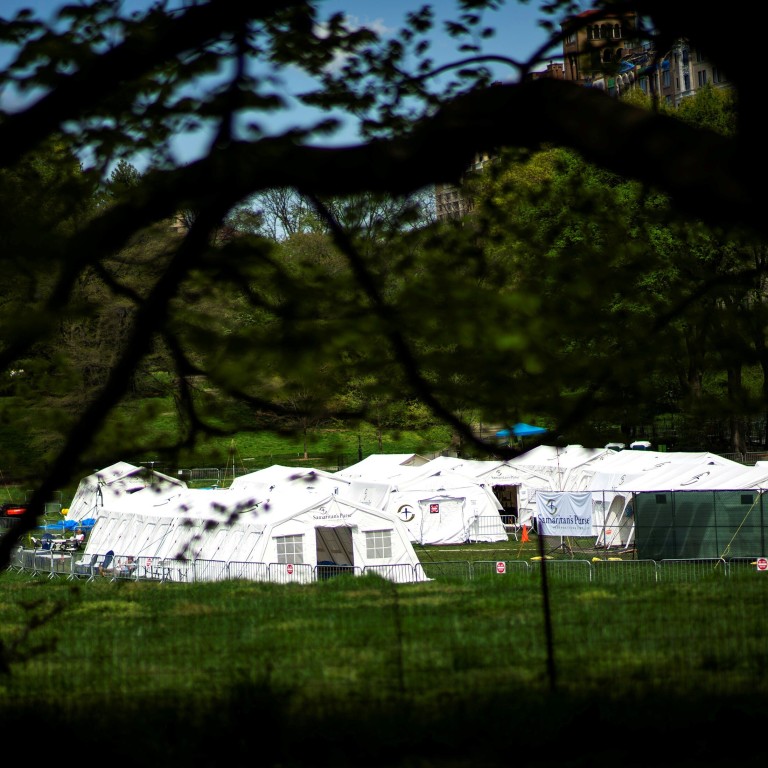
Quarantine centres better than self-isolation for halting coronavirus, experts say
- Isolating at home is too reliant on personal compliance, study finds
- ‘Fangcang’ isolation shelters built in Wuhan, China’s initial epicentre, were more effective in cutting transmissions
A simulation model was created to predict transmission of the virus using home and institutional approaches in a city of 4 million people, based on Singapore.
The results suggested that home-based quarantine reduced an infected person’s contact with other people by 50 per cent in the home and 75 per cent in the community, whereas institution-based isolation reduced contact by 75 per cent in the household and 90 per cent in the community. The findings were published last Wednesday in medical journal The Lancet.
“These results show the need for institution-based isolation to reduce household and community transmission,” said the report’s lead writer Borame Dickens and public health experts from the National University of Singapore and London School of Hygiene and Tropical Medicine.
“We urge policymakers in countries with or facing overburdened health care facilities to consider such measures as countries emerge from lockdowns.”
Isolation and social distancing policies have been widely adopted by governments globally, with a vaccine yet to be developed and testing kits for the virus running short in many places. But implementation of those policies has varied.
The health experts’ model was designed after examining isolation methods and infection numbers in Wuhan – the central Chinese city where the first cases were reported in late December – as well as Europe and the United States.
The article said the “fangcang” isolation shelters in Wuhan were the most effective in reducing the risk of transmission within households. Fangcang facilities were makeshift hospitals set up in stadiums, hotels and convention centres, and admission to them was made mandatory for anyone showing mild symptoms or suspected to have been exposed to infected people.
Meanwhile, in Europe and the US, home isolation has remained the policy, because of stretched health care capacity. According to the Centres for Disease Control and Prevention (CDC) in the US, infected people should try to isolate themselves at home until they can be admitted to hospital.
“Most people with Covid-19 [the disease caused by the coronavirus] have mild illness and can recover at home without medical care. Do not leave your home,” read the CDC website’s advice on how to prevent its spread.
“As much as possible, stay in a specific room and away from other people and pets in your home. If possible, you should use a separate bathroom.”
Hong Kong Disneyland hotels suggested as quarantine centres for virus outbreak
The fangcang facilities in the outbreak’s Chinese epicentre were built after health experts found that many people who had mild symptoms or suspected cases had not been admitted to hospital, meaning that they could infect others.
“Crucially, the fangcang obviated most of the risk of within-household transmission, which frequently occurs as viral loads can be high for mild infections,” the Lancet article said. “Home-based isolation, which is reliant on personal compliance, will therefore inevitably lead to increased transmission.”
The article continued: “Although cities in Europe and the US might not be able to create makeshift isolation centres similar to those in Wuhan, due to a lack of social acceptability or negative public perceptions, other strategies should be considered to reduce transmission, such as repurposing hotels or dormitories.”
Tent wards have been set up in Central Park in New York City, the epicentre of the US outbreak, and other makeshift hospitals are being erected in convention centres, tennis courts and university dormitories.
Britain has built several makeshift hospitals as it, too, scrambles to provide ventilators and increase stocks of masks, gloves and other protective gear for its medical personnel.
Governments in the US and Europe are also starting to call for hotels to be turned into safe houses for medical workers.

